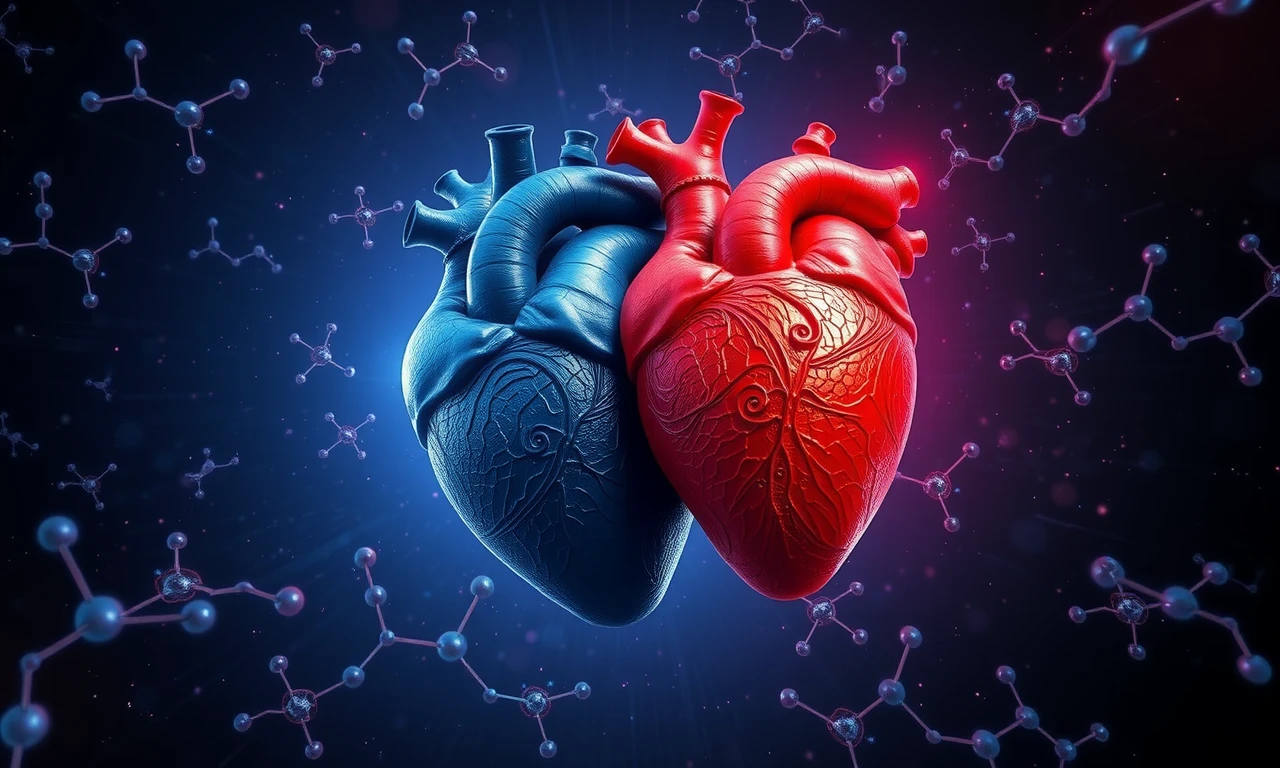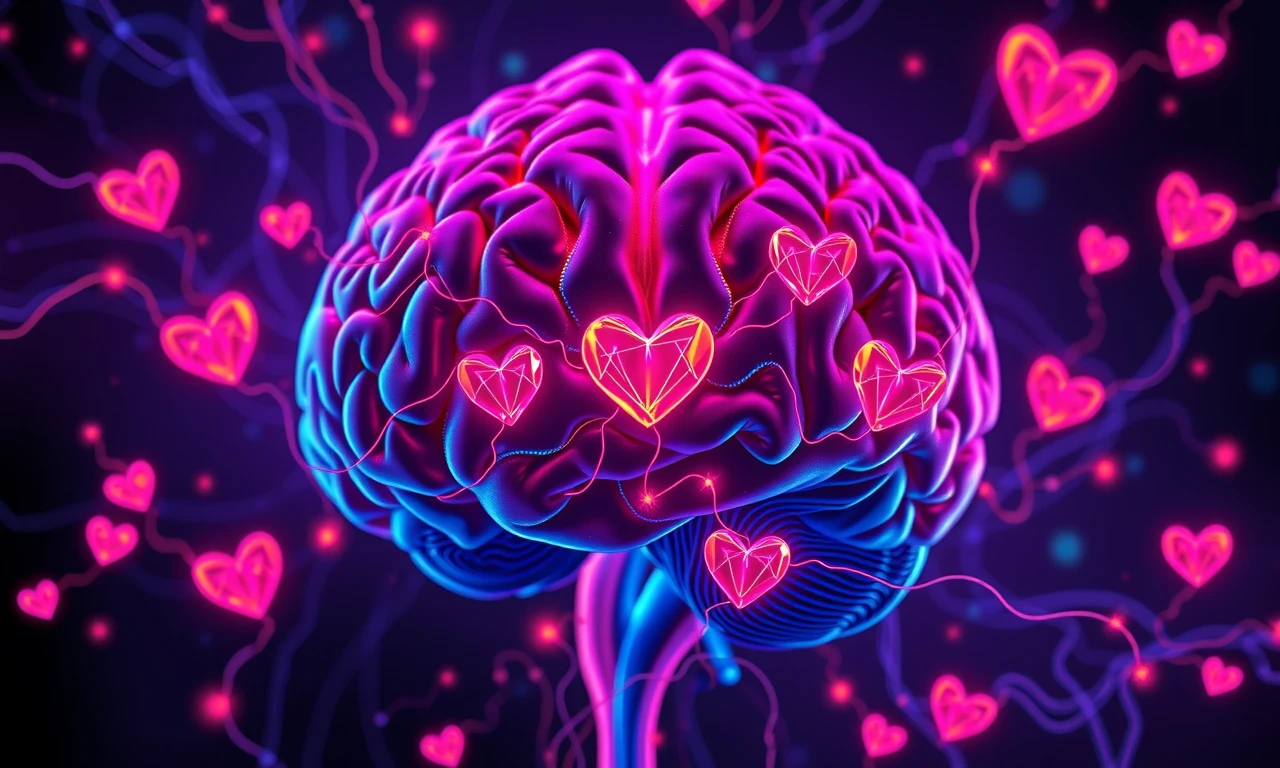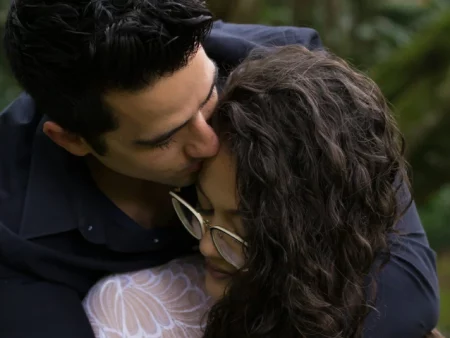In the intricate tapestry of human connections, few threads are as vibrant and complex as love. Within this rich emotional landscape, a distinction emerges between being in love and the enduring state of loving. This nuanced difference shapes the foundation of our relationships, influencing how we feel, behave, and connect over time.
As we embark on this journey to decode the heart’s mysteries, we’ll explore the intense rush of new romance, the deep comfort of lasting attachment, and the delicate balance between passion and stability. You’ll discover how brain chemical changes fuel our emotions, why some people effortlessly sustain long-term love, and how to nurture a bond that’s both passionate and enduring.
Prepare to unravel the complexities of romantic feelings, gaining insights that will transform your understanding of love’s many facets, from the intense spark of falling in love to the comfortable, mature love that can evolve over years.

The Initial Spark: Understanding ‘Being in Love’
The initial spark of romance ignites a whirlwind of emotions, transforming our perception and behavior. This phenomenon, often described as “being in love,” is a complex interplay of psychological and physical reactions that can leave us feeling euphoric and overwhelmed. At its core, this state is characterized by an intense focus on a specific individual, accompanied by a surge of positive emotions and a sense of exhilaration.
The experience of falling head over heels is marked by several distinct features:
- An all-consuming preoccupation with the object of affection
- Idealization of the partner, often overlooking flaws or incompatibilities
- A heightened state of emotional and physical arousal in their presence
- Intense longing for reciprocation and connection
- Willingness to become vulnerable and take emotional risks
- Increased energy and motivation in daily activities
- Altered sleep patterns and appetite changes
- Enhanced creativity and problem-solving abilities
This intoxicating state is largely fueled by a cocktail of neurochemicals, including dopamine and norepinephrine. These powerful substances flood our brains, creating a natural high that can be addictive and transformative. The result is a temporary shift in priorities, with the loved one becoming the center of our universe.
While the duration of this initial phase can vary, research suggests it typically lasts about two years. This timeframe aligns with the concept of limerence, which describes the passionate early stage of romantic attraction. As the relationship progresses, these intense feelings may evolve into a more stable, companionate form of love, characterized by deeper intimacy, trust, and mutual understanding.
Understanding the nature of being “in love” can help individuals navigate the dynamic landscape of romantic relationships, recognizing that while this phase is exhilarating, it’s just the beginning of a potentially rich and profound journey of connection. This awareness allows couples to build a secure foundation for a genuine, enduring partnership based on respect, commitment, and shared values.
The Evolution of Love: From Passion to Companionship
As relationships mature, the initial whirlwind of passion often transforms into a deeper, more enduring connection. This evolution marks the transition from the intense “in love” phase to a more consistent form of love. The shift doesn’t signify a loss, but rather a metamorphosis into something equally profound.
Communication patterns evolve alongside the relationship. Conversations now encompass a broader range of topics, reflecting shared experiences and mutual growth. This change fosters a comfortable intimacy, allowing partners to express themselves more authentically.
As time passes, couples develop a deepening understanding of each other. This familiar knowledge creates a foundation of trust and acceptance, allowing partners to be truly seen and cherished for who they are. The accumulation of shared experiences strengthens their bond, creating a rich tapestry of memories.
This evolution can significantly impact relationship satisfaction. While some may miss the initial intensity, many find greater fulfillment in the stability of mature love. The peaceful coexistence and mutual support can provide a sense of security that passionate love alone cannot sustain.
However, this transition isn’t without challenges. It requires conscious effort to maintain emotional intimacy and appreciate one’s partner amidst daily life. Successful couples balance routine with moments of spontaneity, keeping their connection vibrant.
Love’s journey is about building a genuine, unconditional partnership that can weather life’s storms. It’s in this evolution that we find the true essence of commitment and the beauty of a love that has stood the test of time.
This evolution doesn’t diminish love’s value; it enhances it. The initial passion lays the groundwork for a more compassionate, supportive relationship. As partners navigate this transition with grace and intention, they often discover a love that is richer, more fulfilling, and truly built to endure.
Characteristics of Mature Love
As relationships evolve, they often transition from the initial excitement of new love to a more grounded, enduring connection. This mature love is characterized by several key qualities that distinguish it from the early stages of romance.
At the heart of mature love lies a profound emotional intimacy. Partners develop a deep understanding of each other’s thoughts, feelings, and needs, fostering a sense of security and trust. This emotional closeness allows for authentic self-expression and vulnerability without fear of judgment.
Loyalty and commitment form the bedrock of lasting relationships. Partners demonstrate unwavering support through life’s challenges, prioritizing the relationship’s well-being over fleeting temptations or external pressures.
A hallmark of mature love is the ability to accept and even cherish a partner’s flaws. Rather than seeking perfection, couples embrace each other’s quirks and imperfections, recognizing them as integral parts of their loved one’s identity.
Balancing individuality with togetherness becomes crucial in long-term partnerships. Mature love allows space for personal growth and independence while maintaining a connection and shared life goals.
| Being ‘In Love’ | Mature Love |
|---|---|
| Idealization of partner | Acceptance of flaws |
| Intense emotions | Steady affection |
| Focus on present | Long-term commitment |
| Desire for constant togetherness | Balance of individuality and connection |
| Emphasis on romantic gestures | Acts of everyday kindness and support |
While the initial spark may evolve, mature love offers a depth and richness that can be equally fulfilling. By cultivating these qualities, couples can build a resilient, lasting bond that withstands the test of time and grows stronger with each passing year.
Communication plays a vital role in nurturing mature love. Partners learn to express their needs, listen actively, and resolve conflicts constructively. This sincere dialogue enhances the emotional bond between partners.
Mature love also involves a shared vision for the future. Couples work together to set and achieve common goals, supporting each other’s aspirations while building a life together. This collaborative approach reinforces their commitment and creates a sense of purpose within the relationship.
The Role of Chemistry: Love’s Biological Foundations
The intricate dance of love is orchestrated by a symphony of biochemical reactions within our brains and bodies. At the heart of this biological ballet are neurotransmitters like dopamine and norepinephrine, which surge during the early stages of attraction, creating feelings of euphoria and heightened energy. These chemical messengers activate the brain’s reward centers, mirroring the effects of addictive substances and explaining the all-consuming nature of new romance.
As relationships progress, oxytocin and vasopressin take center stage. Often dubbed the “cuddle hormones,” they foster bonding and attachment between partners. Oxytocin, released during intimate moments like hugging or sex, promotes trust and deepens emotional connections. Vasopressin, meanwhile, plays a crucial role in long-term commitment.
The brain’s chemistry evolves throughout a relationship’s lifespan. Initially, high levels of stress hormones like cortisol may be present, reflecting the anxiety and excitement of new love. As bonds strengthen, these levels typically decrease, replaced by a more balanced neurochemical state that supports lasting affection.
This biological underpinning intertwines with our emotional experiences, shaping how we perceive and interact with our partners. The rush of dopamine can lead to idealization in early stages, while oxytocin fosters the deep trust essential for enduring connections. Understanding these processes can help us navigate the complexities of romantic relationships with greater insight and empathy.
Recognizing the role of brain chemistry in love can also help individuals manage their expectations and emotions more effectively. It explains why the initial intensity of new relationships often fades over time, giving way to a different, but equally valuable, form of connection. This knowledge empowers couples to work together in maintaining their bond, even as the neurochemical landscape shifts.

Rekindling the Spark: Maintaining Passion in Long-term Relationships
Rekindling the spark in long-term relationships requires intentional effort and creativity. Couples can breathe new life into their connection by embracing novel experiences together. Whether it’s exploring a new hobby, traveling to an unfamiliar destination, or simply trying a different restaurant, shared adventures create fresh memories and strengthen bonds.
Cultivating intimacy goes beyond physical closeness. It involves fostering emotional vulnerability and deepening understanding. Regular, meaningful conversations about dreams, fears, and aspirations can reignite the sense of discovery that characterized early courtship. Couples should prioritize quality time, free from distractions, to truly connect and listen to each other.
Addressing conflicts effectively is crucial for maintaining passion. Unresolved issues can create emotional distance and resentment. Couples should practice active listening, express feelings without blame, and work together to find solutions. This collaborative approach reinforces partnership and mutual respect.
Individual growth plays a vital role in relationship satisfaction. Encouraging each other’s personal development and celebrating individual achievements can infuse relationships with renewed energy and admiration. This balance of autonomy and togetherness keeps the dynamic fresh and exciting.
Passion in long-term relationships is like a garden. It requires consistent care, occasional pruning, and the introduction of new elements to flourish. The most vibrant gardens are those tended with love, patience, and creativity. For example, a couple might dedicate time each week to sharing new experiences, such as cooking a meal from a different culture or taking a dance class together, fostering growth and connection.
By implementing these strategies, couples can transform their love from a flickering flame into a sustained, radiant glow that illuminates their shared journey for years to come. Regular check-ins, perhaps monthly, to discuss relationship goals and assess progress can help maintain this momentum. Additionally, seeking inspiration from successful long-term couples or relationship experts can provide fresh perspectives and innovative ideas for keeping the connection vibrant and fulfilling.
When ‘In Love’ Fades: Recognizing and Addressing Relationship Challenges
As the honeymoon phase fades, couples often face new challenges that test the foundation of their bond. Recognizing these hurdles is crucial for maintaining a healthy relationship. One common sign of struggle is a breakdown in communication, where partners feel unheard or misunderstood. Another red flag is a persistent sense of emotional distance, despite physical proximity.
While it’s natural for relationships to evolve, certain patterns may indicate deeper issues. Constant criticism, defensiveness, or contempt can erode the connection between partners. Frequent conflicts over minor issues or a lack of intimacy might also signal underlying problems that need addressing.
Seeking professional help can be beneficial when couples find themselves stuck in negative cycles. Relationship counselors offer valuable tools and perspectives to navigate difficult periods. They can help identify destructive patterns and teach effective communication strategies.
Interestingly, relationship challenges often present opportunities for growth. Overcoming obstacles together can strengthen the bond between partners, fostering resilience and deeper understanding. By viewing difficulties as chances to learn and adapt, couples can emerge stronger and more connected.

Remember, every relationship faces hurdles. The key lies in how couples approach these challenges. By maintaining open communication, showing empathy, and being willing to work together, partners can navigate the complexities of love‘s journey and build a stronger, more resilient connection.
One effective strategy for overcoming relationship challenges is to establish regular check-ins. These dedicated times for open dialogue allow partners to address concerns before they escalate. Additionally, practicing active listening – truly hearing and validating your partner’s perspective – can significantly improve understanding and resolve conflicts more effectively.
It’s also important to celebrate small victories and positive moments in the relationship. Acknowledging progress, no matter how minor, reinforces the couple’s ability to overcome obstacles together. This positive reinforcement can create a cycle of growth and mutual support, strengthening the relationship’s foundation over time.
Love vs. In Love: Finding the Balance
Finding the delicate equilibrium between the exhilaration of being “in love” and the depth of enduring affection is crucial for relationship longevity. Both states offer unique benefits: the former ignites passion and excitement, while the latter provides stability and comfort. Integrating elements of both can create a rich, multifaceted connection that withstands the test of time.
To incorporate aspects of both in long-term partnerships, couples can prioritize novelty alongside familiarity. Planning surprise dates or exploring new activities together can reignite the spark of early romance. Simultaneously, developing shared rituals and traditions fosters a sense of security and continuity.
Maintaining realistic expectations is vital. Understanding that relationships naturally evolve helps partners navigate changes without feeling disillusioned. Recognizing that passion may ebb and flow allows couples to appreciate the quieter moments of companionship without anxiety.
Strategies for cultivating a multifaceted love include:
| Aspect | Early Stage ‘In Love’ | Mature Love | Balanced Approach |
|---|---|---|---|
| Communication | Constant contact | Deep conversations | Mix of daily check-ins and meaningful talks |
| Intimacy | Passionate encounters | Emotional closeness | Blend of physical affection and emotional vulnerability |
| Quality Time | Exciting dates | Comfortable routines | Alternate between new experiences and cherished habits |
| Support | Grand gestures | Consistent presence | Combine thoughtful surprises with reliable everyday support |
| Conflict Resolution | Avoidance or intense arguments | Open dialogue and compromise | Address issues promptly with empathy and understanding |
| Personal Growth | Focus on couple identity | Individual pursuits | Encourage personal development while nurturing the relationship |
By consciously blending these elements, couples can create a relationship that honors both the thrill of new love and the depth of a seasoned bond. This balanced approach fosters a connection that is both exciting and enduring, allowing partners to grow together while maintaining their individuality. Regular check-ins and open communication about expectations and needs can help couples navigate the evolving landscape of their relationship, ensuring that both partners feel valued and fulfilled throughout their journey together.
Conclusion: Embracing the Journey of Love
The journey of love is an ever-evolving experience, offering unique treasures at each stage. From the exhilarating rush of new romance to the deep comfort of enduring affection, every phase contributes to a rich, fulfilling relationship. Embracing this journey means appreciating the nuances of each stage, recognizing the value in both the initial passion and the lasting warmth that develops over time.
Nurturing our connections through open communication, shared experiences, and a willingness to adapt fosters resilient partnerships. Understanding the distinction between initial infatuation and the complex love that follows can lead to more satisfying, enduring bonds. Remember, love is not a destination but a lifelong adventure. By cherishing each moment, learning from challenges, and celebrating your unique connection, you create a love story that’s both beautiful and lasting.
FAQs About Love vs. Being In Love
How long does the 'in love' phase typically last?
The "in love" phase typically lasts between 6 months to 2 years. This period, marked by intense emotions and idealization, varies among individuals and relationships. Factors like personality, life circumstances, and relationship dynamics influence its duration. As initial euphoria fades, couples transition into a deeper, more stable affection. This evolution is natural and often leads to a more enduring connection.
Is it normal for passion to decrease in long-term relationships?
Yes, it's normal for passion to decrease in long-term relationships as couples settle into comfortable routines. However, this doesn't signal the end of romance. Many find their connection deepens, evolving into a more stable, intimate form of love. Cultivating shared experiences, maintaining open communication, and introducing novelty can help reignite the spark and foster emotional closeness.
Can you fall in love with your partner again after years together?
Absolutely! Rekindling romance with a long-term partner is possible and often rewarding. By introducing novelty, fostering emotional intimacy, and rediscovering shared passions, couples can reignite the spark. Engaging in new experiences together, practicing gratitude, and prioritizing quality time can help partners fall in love anew. This process creates a deeper, more meaningful connection, strengthening the foundation of their relationship for years to come.
How do you know if you're truly in love or just infatuated?
Distinguishing true love from infatuation requires self-reflection and time. Infatuation often fades quickly, while genuine affection deepens. Consider your motivations: Do you prioritize your partner's well-being? Are you willing to compromise? Does your connection transcend physical attraction? True love involves mutual growth, shared values, and weathering challenges together. It's about building a lasting, supportive partnership that evolves over time.

Jeffrey Young is an American psychologist renowned for developing schema therapy. He founded the Schema Therapy Institute and is a leader in the field of cognitive behavioral therapy. Young has authored several influential books, including Schema Therapy for professionals and Reinventing Your Life for the general public.







